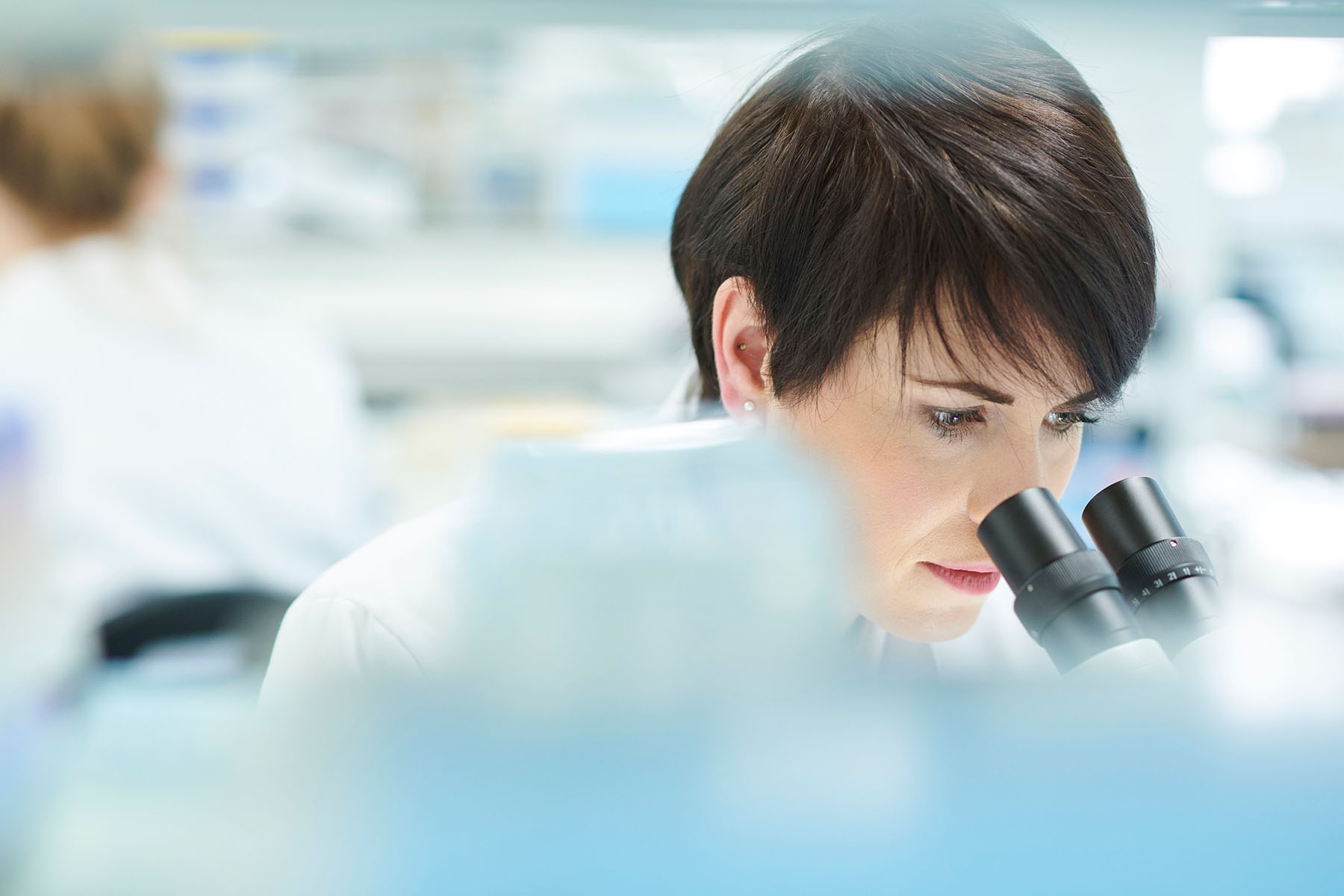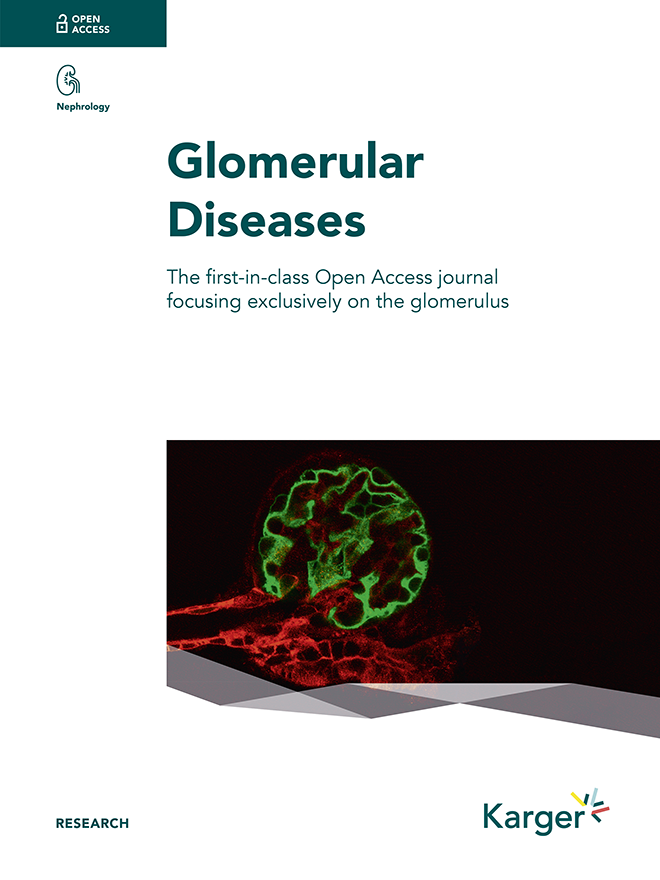
RESEARCH
Ultrastructural Pathology
Special topic articles published in Glomerular Diseases.
Importance of Electron Microscopy in Kidney Biopsy Pathology
Preface written by Cynthia C. Nast, Deputy EditorElectron microscopy (EM) has been used since the 1950s to identify and study structures in the kidney, including the glomerulus [1-3]. Since the 1970s, ultrastructural examination of kidney biopsies has been used routinely to discover, define, and diagnose glomerular diseases [4]. Subsequently, other techniques such as immunohistochemistry, antigen retrieval immunofluorescence of formalin-fixed paraffin-embedded tissue, and in situ hybridization have been applied to kidney biopsy tissue for diagnostic purposes. While these additional methods of tissue evaluation enhance diagnostic accuracy, EM continues to provide valuable and important information in kidney biopsy interpretation not visible by other techniques, particularly for glomerular disease. EM findings may be essential to making a primary or significant secondary diagnosis or resolving a differential diagnosis; may be important by contributing additional clinically relevant diagnostic information; may be confirmatory by validating diagnostic findings obtained by other modalities; or may not provide useful information.
Various studies have shown that EM significantly influences the final diagnosis of native kidney biopsies in 18-86% of cases and was considered essential in 12-40% [5-9]. Studies of pediatric kidney biopsies have shown EM is more critical in this age group, providing essential or important diagnostic information in 63-64% and confirmatory findings in 23-32%, while it did not add useful information in only 4-11% [10, 11]. Diseases in which EM is essential or important for making a correct diagnosis include podocytopathies, genetic abnormalities of glomerular basement membranes, certain storage diseases, dense deposit disease, glomerular-limited thrombotic microangiopathy, and lesions with organized deposits such as immunotactoid and collagenofibrotic glomerulopathy. Other important EM contributions include determining the class and activity of lupus glomerulonephritis, and stage of membranous nephropathy. In transplanted kidneys, EM is essential for the identification of early changes of transplant glomerulopathy (Banff score cg1a), recurrent diseases such as focal and segmental glomerulosclerosis, and de novo glomerular diseases [12, 13]. It should be noted that renal biopsy practices may influence the percentage of cases where EM is considered to be of diagnostic benefit. Additionally, up to 10% of native kidney biopsies may have a diagnosis made based on light microscopy and immunofluorescence only to discover subsequently that EM findings alter the interpretation.
This Collection focuses on the current role of EM in the diagnosis of glomerular diseases in native and transplant kidney biopsies, and to a lesser degree on EM contributions to the evaluation of other kidney compartments. The articles review in detail the correlation of EM, light-microscopic and immunofluorescence findings with usual clinical presentations to develop a differential diagnosis and arrive at a final diagnosis, with particular emphasis on the contribution of EM. The native kidney diseases reviewed include cyroglobulinemic glomerulonephritis, hereditary nephritis (Alport syndrome) and thin basement membrane lesions, infection-related glomerulonephritis and lupus nephritis. On transplanted kidney, there are articles covering recurrent diseases, de novo diseases, and transplant glomerulopathy. There is an additional article showcasing the real-world use of EM in six native kidney biopsies. The articles in this Collection are a good reminder of the importance of assessing kidney biopsies ultrastructurally and provide a resource for the use of EM in clinical kidney biopsy practice.
- Pease DC, Baker RF. Electron microscopy of the kidney. Am J Anat 1950;87(3):349–89.
- Pease DC. Fine structures of the kidney seen by electron microscopy. J Histochem Cytochem. 1955;3(4):295–308.
- Latta H, Maunsbach AB, Madden SC. The centrolobular region of the renal glomerulus studied by electron microscopy. J Ultrastruct Res. 1960;4:455–72.
- Spargo BH. Practical use of electron microscopy for the diagnosis of glomerular disease. Hum Pathol. 1975;6(4):405–420.
- Sementilli A, Moura LA, Franco MF. The role of electron microscopy for the diagnosis of glomerulopathies. Sao Paulo Med J. 2004;122(3):104–9.
- Collan Y, Hirsimäki P, Aho H, et al. Value of electron microscopy in kidney biopsy diagnosis. Ultrastruct Pathol. 2005;29(6):461–8.
- Haas M. A reevaluation of routine electron microscopy in the examination of native renal biopsies. J Am Soc Nephrol. 1997;8(1):70–6.
- Kurien AA, Larsen C, Rajapurkar M, et al. Lack of electron microscopy hinders correct renal biopsy diagnosis: a study from India. Ultrastruct Pathol. 2016;40(1):14–7.
- Mokhtar GA, Jallalah SM. Role of electron microscopy in evaluation of native kidney biopsy: a retrospective study of 273 cases. Iran J Kidney Dis. 2011;5(5):314–9.
- Zuppan C. Role of electron microscopy in the diagnosis of nonneoplastic renal disease in children. Ultrastruct Pathol. 2011;35(6):240–4.
- Zhang X, Xu J, Xiao H, et al. Value of electron microscopy in the pathological diagnosis of native kidney biopsies in children. Pediatr Nephrol. 2020;35(12):2285–95.
- Grodsky JD, Craver RD, Ashoor IF. Early identification of transplant glomerulopathy in pediatric kidney transplant biopsies: a single-center experience with electron microscopy analysis. Pediatr Transplant. 2019;23(5):e13459.
- de Kort H, Moran L, Roufosse C. The role of electron microscopy in renal allograft biopsy evaluation. Curr Opin Organ Transplant. 2015;20(3):333–42.
-
C3 Glomerulopathy: A Review with Emphasis on Ultrastructural Features
Jean Hou; Kevin Yi Mi Ren; Mark Haas
Glomerular Dis (2022) 2 (3): 107–120 (DOI:10.1159/000524552) -
Transplant Glomerulopathy: Importance of Ultrastructural Examination
Ian W. Gibson
lomerular Dis (2021) 1 (2): 68–81 (DOI:10.1159/000513522) -
Infection-Related Glomerulonephritis
Mazdak A. Khalighi; Anthony Chang
Glomerular Dis (2021) 1 (2): 82–91 (DOI:10.1159/000515461) -
Renal Disease in Cryoglobulinemia
Thomas Menter; Helmut Hopfer
Glomerular Dis (2021) 1 (2): 92–104 (DOI:10.1159/000516103) -
Hereditary Nephritis and Thin Glomerular Basement Membrane Lesion
Mark A. Lusco; Agnes B. Fogo
Glomerular Dis (2021) 1 (3): 135–144 (DOI:10.1159/000516744) -
The Continuing Need for Electron Microscopy in Examination of Medical Renal Biopsies: Examples in Practice
Michifumi Yamashita; Mercury Y. Lin; Jean Hou; Kevin Y.M. Ren; Mark Haas
Glomerular Dis (2021) 1 (3): 145–159 (DOI:10.1159/000516831) -
De novo Glomerular Disease and the Significance of Electron Microscopy in Renal Transplantation
Surya V. Seshan; Steven P. Salvatore
Glomerular Dis (2021) 1 (3): 160–172 (DOI:10.1159/000517124) -
Lupus Nephritis: The Significant Contribution of Electron Microscopy
Luan Truong; Surya V. Seshan
Glomerular Dis (2021) 1 (4): 180–204 (DOI:10.1159/000516790) -
Recurrent Glomerular Diseases in Renal Transplantation with Focus on Role of Electron Microscopy
Surya V. Seshan; Steven P. Salvatore
Glomerular Dis (2021) 1 (4): 205–236 (DOI:10.1159/000517259)


